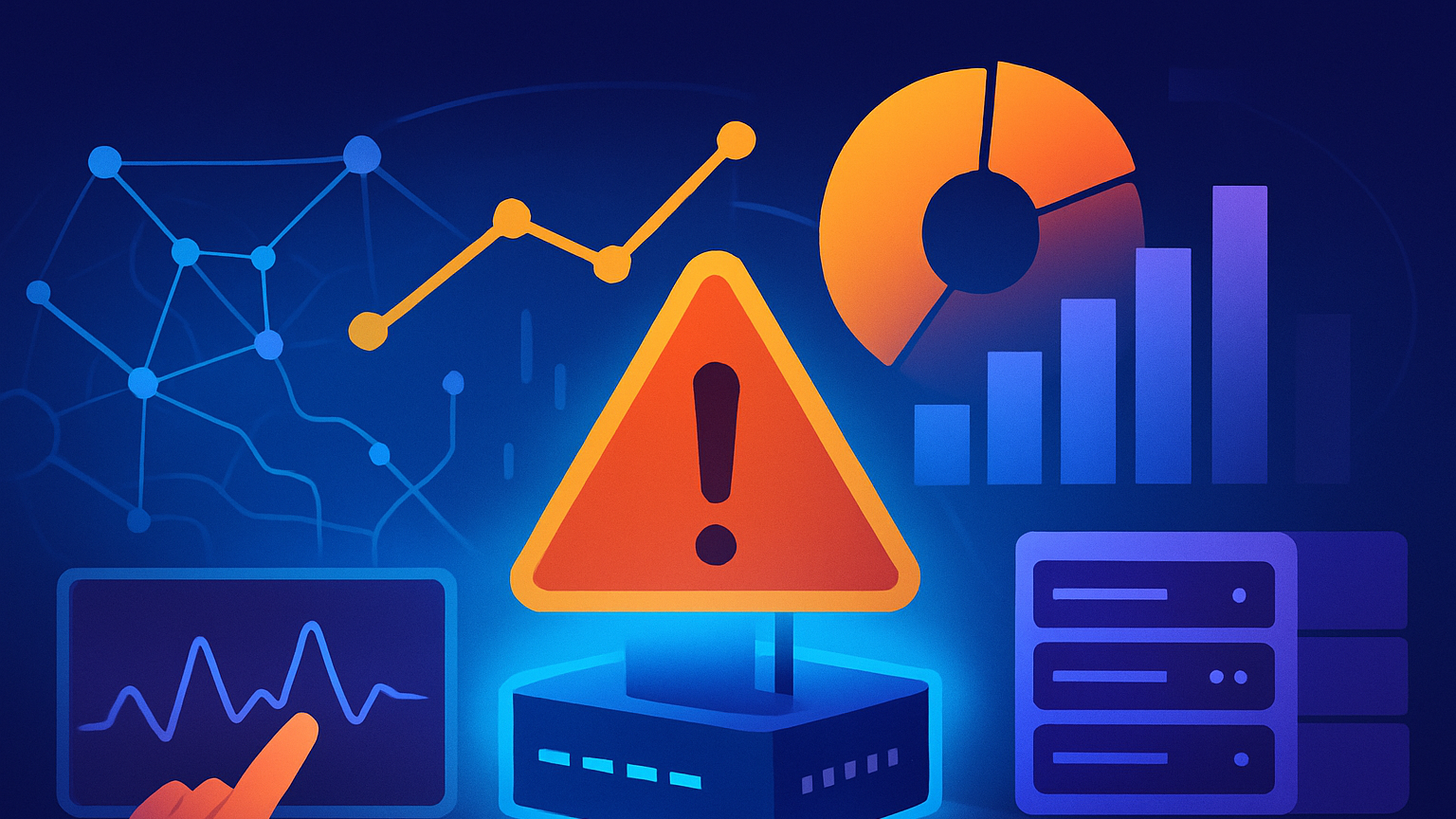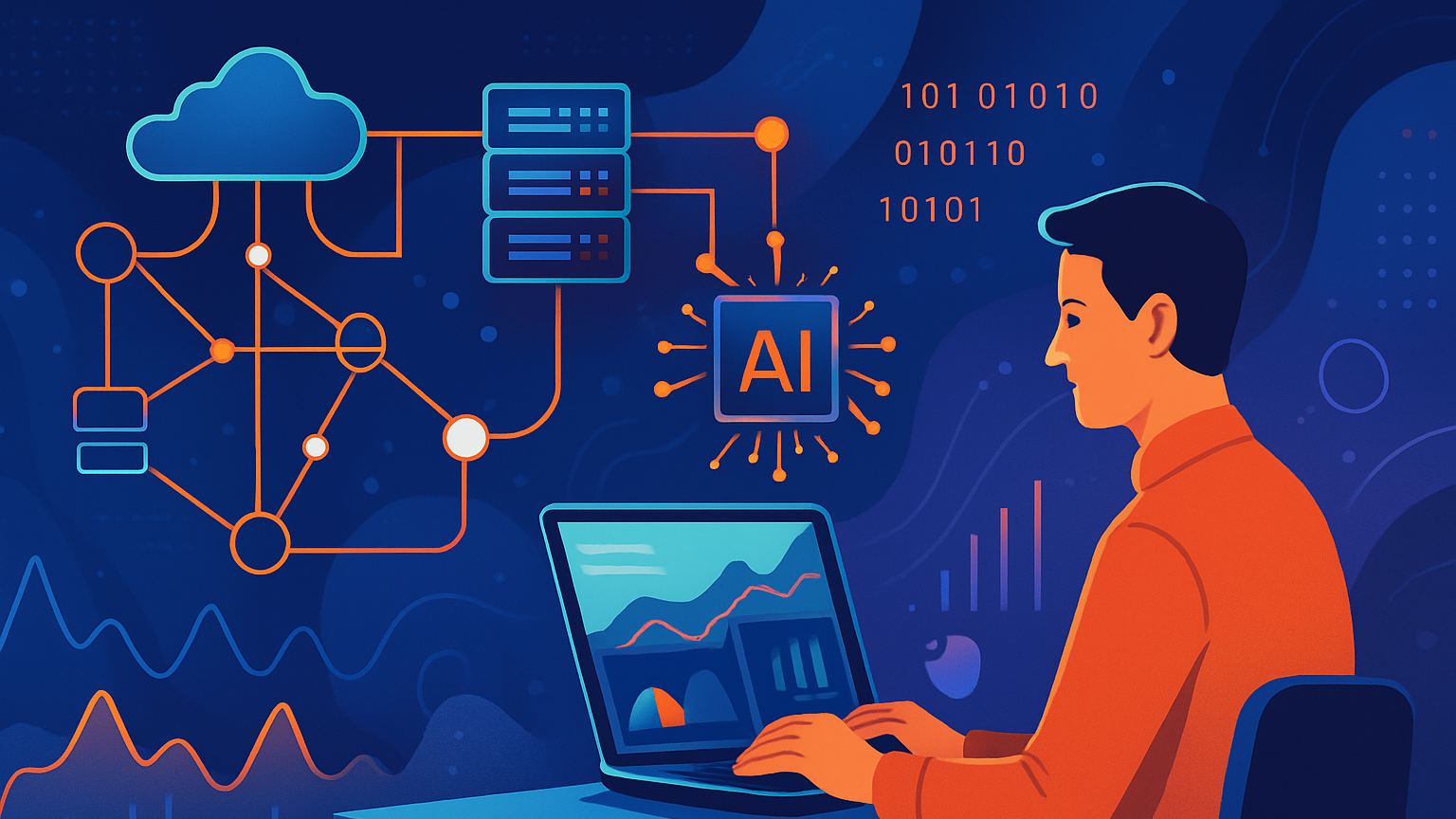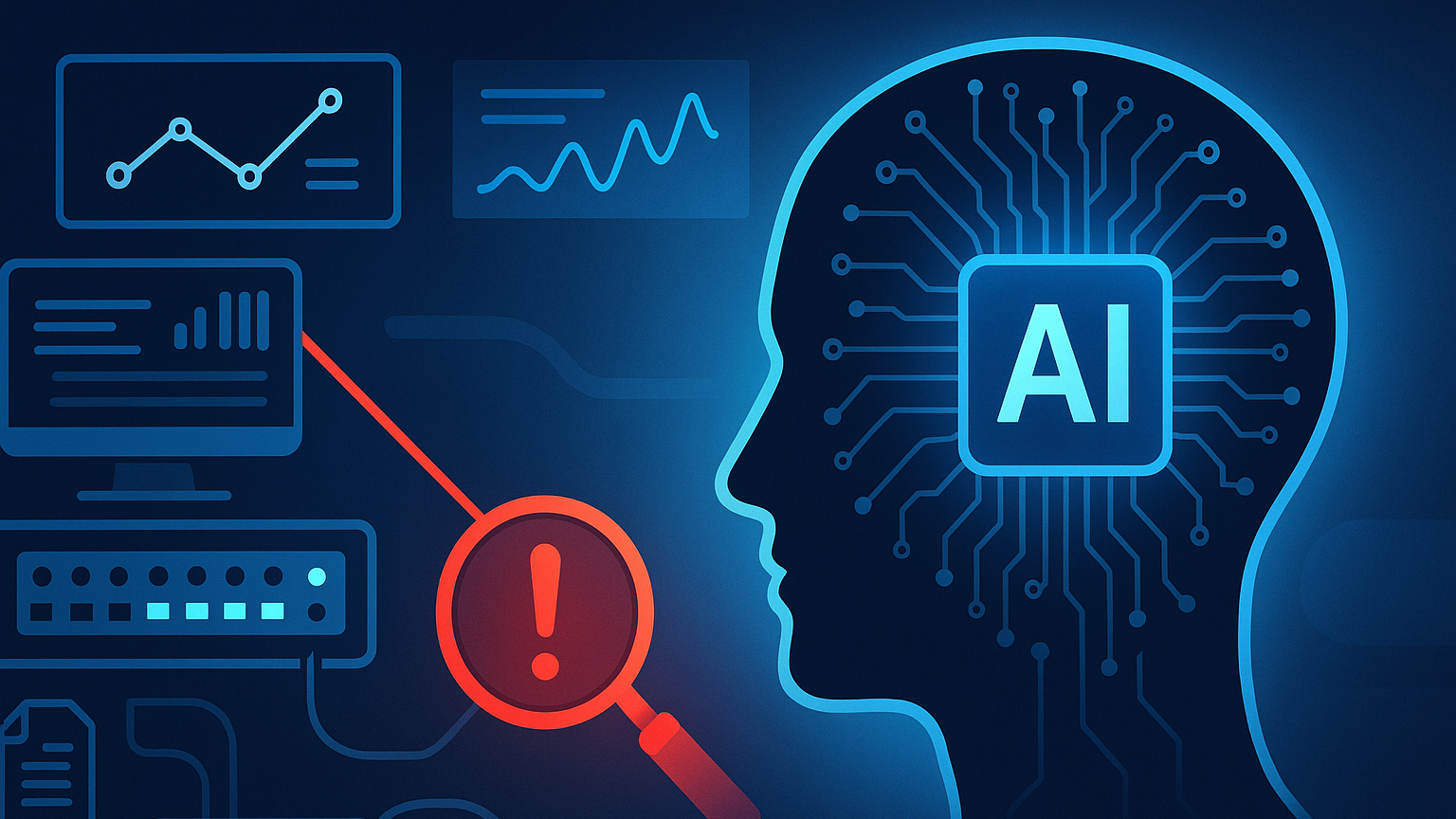
AI in Analytics for Network Utilization Insights and IT Performance
You’re living in an era where network performance is business performance. As more services move to the cloud and remote work becomes permanent for many organizations, the pressure on networks and IT systems has never been higher. AI in analytics gives you a way to turn huge amounts of telemetry into clear, actionable insights about network utilization and overall IT performance. This article walks you through what AI can do, how to apply it in your organization, and what to watch out for so you can make smarter, faster decisions that improve reliability, user experience, and cost efficiency.
Why network utilization matters to your business
Network utilization is a core determinant of digital experience. Whether you’re serving customers through a consumer app, enabling hybrid work for employees, or supporting IoT devices on a factory floor, the network is the lifeline. High or poorly distributed utilization can cause latency, packet loss, and outages that directly impact revenue, customer satisfaction, and employee productivity. You need visibility into utilization patterns to predict congestion, allocate capacity effectively, and prioritize improvements that offer the biggest business impact.
The limits of traditional monitoring
Traditional monitoring often relies on thresholds, static alerts, and manual triage. You probably have dashboards that report metrics like throughput, latency, and packet loss, but they may not tell you why something is happening or how it will evolve. Manual correlation across logs and metrics is time-consuming and error-prone. As traffic becomes more complex and dynamic, these legacy approaches leave you reacting instead of preventing performance degradation. AI helps close that gap by automating correlation, uncovering patterns you might miss, and surfacing prescriptive actions.
How AI changes the analytics equation
AI adds scale, speed, and pattern recognition to analytics. Instead of waiting for a threshold to be crossed, you can use AI to detect anomalies early, forecast demand, classify traffic, and predict the impact of configuration changes. AI models learn normal behavior and flag deviations, correlate signals across layers (network, server, application), and prioritize incidents by predicted business impact. That lets you focus on the incidents that matter and automate routine remediation, which frees your team to work on strategic improvements.
From detection to prediction and prescriptive actions
AI doesn’t just detect problems; it predicts them and suggests fixes. With time-series forecasting, you can anticipate usage spikes and scale capacity proactively. Root cause analysis models can identify the most likely source of an issue and suggest remediation steps. Reinforcement learning and automation frameworks can even apply safe, tested fixes. When you combine detection, prediction, and prescriptive action, you move from firefighting to continuous optimization.
Key AI techniques for network utilization and IT performance
There are several AI techniques particularly relevant to network analytics. You’ll recognize that each technique addresses a specific gap in traditional tools and can be combined to deliver richer insights.

Anomaly detection
Anomaly detection uses unsupervised or semi-supervised models to learn what “normal” looks like across many metrics and then surface deviations. For network utilization, anomalies might be sudden shifts in throughput, unusual flow patterns, or unexpected protocol mixes. You’ll get early warnings of problems that might not yet breach thresholds, allowing you to investigate and contain them quickly.
Forecasting and capacity planning
Time-series forecasting models predict future utilization based on historical patterns and external features (like marketing campaigns or scheduled backups). These forecasts help you plan capacity proactively—whether that means provisioning cloud instances, reserving bandwidth, or scheduling maintenance windows to minimize impact. Forecast accuracy directly translates into cost savings and improved service levels.
Traffic classification and behavior modeling
AI can classify traffic flows by application, user group, or device type even when traffic is encrypted or obfuscated. Behavior modeling lets you understand baseline patterns for different segments (e.g., remote employees vs. office users vs. IoT devices) and detect deviations such as lateral movement, data exfiltration, or misconfigured services.
Root cause analysis and causal inference
AI models can correlate symptoms across telemetry sources (logs, SNMP, NetFlow, packet captures, application metrics) to identify likely root causes. Causal inference techniques help differentiate correlation from causation so you don’t waste time chasing red herrings. You’ll be able to act on the most probable fixes and reduce mean time to repair (MTTR).

Reinforcement learning and automation
Reinforcement learning (RL) is useful when actions have delayed or cumulative effects, such as network routing changes or dynamic configuration. RL agents can learn policies that optimize for performance and cost while respecting constraints. You can combine RL with automated playbooks to apply verified changes safely.
What data you need and how to collect it
AI needs data—lots of it—and the right types of telemetry. You’ll want to design data collection that balances fidelity, cost, and privacy. Typical sources include:
- Network flow records (NetFlow, sFlow, IPFIX)
- SNMP and device counters
- Packet captures for deep diagnosis
- Telemetry from SD-WAN and cloud networking APIs
- Application performance metrics and logs
- End-user experience metrics (synthetics, RUM)
- Configuration and topology data
Instrument your infrastructure to gather these signals at appropriate granularity. For routine analytics and forecasting, aggregated flows and device counters often suffice. For deep-dive root cause analysis, sample packet captures and detailed traces may be required.
Data quality, labeling, and feature engineering
AI success depends on data quality and features. You need consistent timestamps, synchronized clocks, normalized metric names, and clear definitions for every metric. Labeling incidents (e.g., outage, congestion, configuration error) helps supervised models, while feature engineering extracts meaningful signals (ratios, moving averages, percentiles). If you lack labeled incidents, start with unsupervised models and gradually add labels as your team documents and tags incidents.
Building an AI-enabled analytics stack
You can build your AI stack incrementally. Focus on components that deliver immediate value and scale from there.

Storage and processing
You’ll need a time-series database or data lake for raw telemetry and aggregates. Ensure retention policies align with your modeling needs—some models need months of history. Choose processing frameworks that let you compute features and run models efficiently, whether on-premises or in the cloud.
Model development and deployment
Use a combination of pre-built models for common tasks (anomaly detection, forecasting) and custom models for domain-specific problems. Set up CI/CD pipelines for models so you can retrain and deploy safely. Instrument models to track drift and performance over time.
Visualization and alerting
AI insights should surface in dashboards and alerts integrated with your incident management tools. Avoid overwhelming users with low-value alerts by using confidence scores and severity predictions. Provide context and recommended remediation steps within alerts to accelerate response.
Integrating AI with your operational processes
Technology alone won’t fix performance issues; process matters. To realize value, integrate AI outputs with your IT operations and SRE workflows. Train analysts on how to interpret model outputs and how to verify AI suggestions. Create runbooks that include AI-based checks and automate routine playbooks for low-risk remediations. Make AI a partner for humans, not a black box that people ignore.
Use cases by sector: how AI helps in specific business areas
Different sectors have distinct priorities. Tailoring AI for your business domain helps you extract the most value quickly.
Financial services
You operate in a low-latency, high-compliance environment. AI helps you detect microbursts in network traffic that can cause trading delays, forecast load during market events, and ensure redundancy across data centers. Traffic classification can help spot anomalous exfiltration attempts that might indicate fraud or insider threats.
Healthcare
Reliability and privacy are paramount. AI helps you prioritize network traffic for clinical applications, detect congested links that could degrade telemedicine sessions, and spot unusual patterns that might indicate misconfigured medical devices. Forecasting supports capacity planning for spikes during public health events.
Retail and e-commerce
For retail, customer experience directly affects revenue. AI lets you forecast traffic during promotions, optimize CDN and backend routing, and detect anomalies in checkout flows caused by network degradation. You can correlate marketing campaigns to traffic patterns and proactively provision resources.
Manufacturing and logistics
IoT and industrial control systems generate steady but critical traffic. AI helps you detect deviations in device behavior that could signal network problems or malfunctions, prioritize control traffic to avoid production impact, and forecast bandwidth needs for firmware rollouts.
Telecommunications and service providers
You’re under constant pressure to guarantee SLAs. AI helps you analyze large-scale flow data, detect congestion patterns across peering and transit links, and optimize routing dynamically. It also helps automate capacity planning and maintenance scheduling to minimize customer impact.
Public sector and education
Networks support essential services and learning platforms. AI helps identify performance issues during critical events, ensure equitable bandwidth allocation across campuses or municipalities, and monitor for unusual traffic associated with cyber threats.
Key performance indicators (KPIs) you should track
Choosing the right KPIs aligns AI efforts with business goals. You should track both technical and business-oriented metrics.
- Network utilization (by link, by application, by segment) with percentiles
- Latency, packet loss, jitter across critical paths
- Mean time to detect (MTTD) and mean time to repair (MTTR)
- User experience scores (synthetic or real user metrics)
- Cost per GB and cost per user for network services
- SLA compliance and incident frequency
Track these KPIs before and after AI initiatives to quantify impact and make continuous improvements.
Measuring ROI and cost considerations
Investing in AI yields measurable benefits when you capture cost savings and performance improvements. Cost areas to consider include license fees for AI tools, storage and compute for telemetry, and team time for model development and operations. Benefits include reduced downtime, lower incident handling costs, optimized cloud and network spend, and improved revenue from better customer experience. Build a simple ROI model showing expected reductions in MTTR, avoided outages, and infrastructure savings to justify investment.
Governance, privacy, and security concerns
You’re responsible for ensuring data and AI models are secure and compliant. Establish governance policies that define who can access telemetry, how long data is retained, and how models are validated. Pay special attention to privacy when dealing with user traffic—obfuscate or aggregate data where possible. Protect models and pipelines from tampering and ensure auditability so you can explain decisions that affect critical infrastructure.
Organizational change: skills and team structure
Adopting AI in network analytics requires cross-functional collaboration. You’ll need data engineers to pipeline telemetry, ML engineers to build models, network engineers to validate outputs, and SREs/IT ops to operationalize automation. Consider centralized analytics teams that partner with domain owners to keep models aligned with operational realities. Invest in upskilling your existing staff so they can work alongside AI systems and interpret their outputs confidently.
Choosing tools and vendors
The market offers many options, from specialized AIOps platforms to cloud-native observability suites. When evaluating tools, focus on data integrations, model explainability, ease of deployment, and how the tool fits your operational workflows. Open-source libraries and custom models provide flexibility, while commercial platforms can accelerate time-to-value with pre-built capabilities. Prioritize vendors that support hybrid and multi-cloud environments if your infrastructure spans on-prem and cloud.
Practical implementation roadmap
A pragmatic rollout reduces risk and wins early support. Follow a staged approach:
- Start with discovery: inventory telemetry sources, establish baselines, and identify pain points.
- Pilot anomaly detection and forecasting on a critical segment where impact is measurable.
- Integrate alerts into incident workflows and collect feedback from responders.
- Expand to root cause analysis and automated playbooks for routine remediations.
- Scale across environments, refine models, and incorporate business context into decision logic.
This incremental approach helps you show value quickly while building organizational confidence.
Common pitfalls to avoid
You’ll face pitfalls on the AI journey, but you can avoid common mistakes with foresight.
- Don’t rely solely on raw model outputs; validate with domain expertise.
- Avoid alert fatigue by calibrating sensitivity and using confidence scoring.
- Don’t neglect data hygiene—poor-quality telemetry leads to poor models.
- Don’t automate high-risk changes without robust testing and rollback mechanisms.
- Avoid one-size-fits-all models; tailor models to different network segments and use cases.
Being mindful of these traps will keep your AI efforts productive and trusted.
Demonstrative scenarios: practical examples
Seeing AI in action helps you understand the benefits. Imagine a retail site experiencing intermittent slow checkout times during promotions. AI detects a pattern of queueing on a particular backend service that coincides with increased mobile traffic from a geography. Forecasting predicts the next campaign will double the load, and AI recommends splitting traffic across an additional backend pool and pre-warming cache layers. You implement the change during off-peak hours and avoid the outage, protecting revenue and reputation.
In another example, a healthcare network sees periodic spikes in latency that degrade telemedicine. AI correlates the spikes to firmware updates pushed to a set of medical devices during business hours. Root cause analysis points to a misconfigured update schedule. Adjusting the update window reduces patient impact and frees up network capacity for clinical systems.
Evaluating model performance and continuous improvement
Once models are in production, monitor their performance continuously. Track detection precision and recall, forecast accuracy, and the business outcomes tied to AI-driven actions. Set up retraining schedules and monitor for data drift. Encourage incident responders to annotate AI suggestions so models learn from human judgments. Continuous evaluation and iteration are critical—you’ll improve outcomes and maintain trust.
Ethical considerations and transparency
AI-driven decisions can have significant impacts on operations and people. You should make model behavior transparent to stakeholders and provide ways for humans to override or question AI suggestions. Document model limitations and ensure decisions that materially affect customers or employees are auditable. Prioritizing explainability and human-in-the-loop controls reduces risk and increases adoption.
Future trends to watch
AI for network analytics is evolving fast. Expect to see more real-time streaming analytics, tighter integration between AI and network control planes (e.g., intent-based networking), and wider adoption of causal models that suggest not just correlations but verifiable causes. Advances in federated learning will let you train models across organizations without sharing raw traffic, improving privacy. Edge AI will enable local inference on networking devices for faster detection and remediation.
Getting started checklist
Starting small and measurable helps you build momentum. Consider these initial steps:
- Map your most critical network-dependent services and their SLAs.
- Identify the telemetry you already collect and the gaps to fill.
- Pilot an anomaly detection model for a single critical link or application.
- Define KPIs to measure impact and agree on success criteria with stakeholders.
- Create an escalation and feedback loop between AI outputs and human operators.
This checklist helps you focus on high-impact areas and reduce complexity at the start.
Final thoughts: turning insights into performance
AI in analytics gives you the ability to convert telemetry into business outcomes. By combining anomaly detection, forecasting, traffic classification, and automated remediation, you can reduce outages, optimize costs, and deliver consistently better digital experiences. Remember that success depends on clean data, thoughtful integration with operational processes, and continuous measurement of business impact. Approach the journey iteratively, involve cross-functional teams, and treat AI as an augmentation to human expertise rather than a replacement.
If you found this article helpful, please clap the article, leave a comment with your thoughts or questions, and subscribe to my Medium newsletter for updates on AI in analytics and IT performance. Your feedback helps shape future content and practical guides tailored to real-world challenges.
